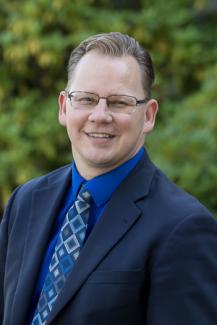Media Contact
Katy Payne she/her
360-764-0201
Three important indicators of student success are attending school regularly, passing all of their ninth grade classes, and completing advanced courses where they earn both high school and college credit at the same time. In the 2022–23 school year, Washington’s students made significant strides in all three, according to data published recently by the Office of Superintendent of Public Instruction (OSPI).

“Each year, Washington’s students continue to work hard to set themselves up for success,” said State Superintendent Chris Reykdal. “Attending school regularly, passing all their classes in ninth grade, and completing advanced-level coursework all prepare students for their unique future pathways. I am so proud of our students for their efforts and of educators and district staff for supporting them.”
Attendance
Attending school regularly is a critical building block for student learning and is linked to students’ reading ability and likelihood of graduating from high school on time. On an average school day, about 95% of students are in class and 5% are absent.
At the height of the pandemic, states across the nation saw a decrease in student attendance. In Washington, the trend over the past two years is moving in a positive direction. “Regular Attendance” is defined as missing no more than two days of school per month for any reason. In the 2022–23 school year, the percentage of students who attended school regularly increased to 69.7%, an improvement of 2.5 percentage points from the 2021–22 school year.
With the support of federal emergency pandemic relief funding, OSPI has invested in a regional initiative, coordinated through the state’s nine educational service districts (ESDs), to provide direct outreach to students and their families and supporting school districts in enhancing their attendance systems.
To maintain and expand these services, OSPI submitted a budget request to the Legislature proposing need-based grant funding for ESDs and community-based organizations to continue implementing these intervention strategies. Funding would also support the development of robust early warning systems and the collection and analysis of attendance and other relevant data.
The Legislature is currently considering a bill that would continue these efforts. Senate Bill 5850, sponsored by Sen. John Braun, would create a grant program to support students who have 18 or more absences from school in a year. The bill would also provide funding for OSPI’s Open Doors Youth Reengagement Program, which supports students ages 16–21 facing barriers to completing high school. Its companion bill, House Bill 2146 sponsored by Rep. Alicia Rule, is also being considered.
Ninth Grade On Track
When students pass all their classes in ninth grade, they are up to four times more likely to graduate from high school on time.
Across Washington, 70.3% of students passed all their ninth-grade courses in the 2022–23 school year, an increase of 0.2 percentage points as compared to the 2021–22 school year. The greatest gains have been for students who are migratory, whose ninth grade on-track rate increased by 3.5 percentage points from 2021–22 to 2022–23. Students who are multilingual/English learners also made strides, as their ninth grade on-track rate increased by 1.4 percentage points in the 2022–23 school year.
The Ninth Grade Success Initiative, a partnership between OSPI and Stand for Children’s Center for High School Success, has proven success in increasing the numbers of students successfully completing ninth grade. Since 2019, more than 50 school districts across Washington have developed Ninth Grade Success Teams and provided mentorship and tutoring for students. Those districts that participated from 2019–2022 have seen their ninth grade on-track rates increase by nearly 6.7 percentage points as compared to neighboring schools in the same county.
OSPI invested in the Ninth Grade Success Initiative with a portion of the agency’s federal pandemic relief funding, which expires in September. Superintendent Reykdal has asked the Legislature for permanent state dollars to sustain the project and expand it into more school districts.
House Bill 2053, sponsored by Rep. Monica Stonier, would establish the Ninth Grade Success Grant Program and is currently making its way through the legislative process. Senate Bill 5408, a similar bill sponsored by Sen. Marko Liias, is also moving through the legislative process.
Dual Credit
Dual credit courses offer Washington students the opportunity to earn college-level credit while still in high school, helping to prepare them for postsecondary education. These courses include Advanced Placement, Cambridge International, Career and Technical Education (CTE) Dual Credit, College in the High School, International Baccalaureate, and Running Start.
During the 2022–23 school year, 64.5% of high school students completed a dual credit course, an increase of 1.4 percentage points as compared to the 2021–22 school year.
Most notably, every student group made gains in dual credit course completion rates as compared to the previous year. Students identified as two or more races and students identified as Black/African American completed dual credit courses at a rate higher than the statewide average—65.7% and 65.4%, respectively.
Expanding student access to dual credit opportunities has remained a top priority for Superintendent Reykdal. The Legislature made progress in this area during the 2023 Legislative Session, eliminating fees for College in the High School courses and expanding access to Running Start.
Attendance, ninth grade on-track, and dual credit data can be viewed for the state, by school district, and by school on the Washington State Report Card.






